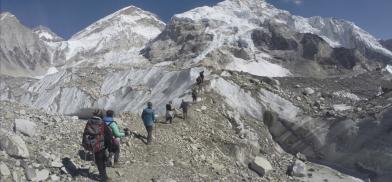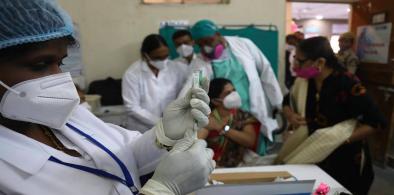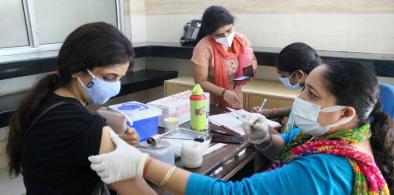Already fragile, Himalaya faces COVID-19 risk
The 300 million inhabitants of the Himalayan mountains, already threatened by the climate crisis, now face new risks to their livelihoods from the economic downturn caused by the COVID-19 pandemic

The 300 million inhabitants of the Himalayan mountains, already threatened by the climate crisis, now face new risks to their livelihoods from the economic downturn caused by the COVID-19 pandemic.
Called the Roof of the World the Himalaya and the Tibetan Plateau store the most ice after the polar regions, and their melt feeds waters in rivers on which 1.3 billion people downstream depend. Asians already facing water shortages and extreme weather now have to contend with mass unemployment, hunger and disease.
‘The social, economic and environmental impacts have been harsh and have exacerbated old risks and vulnerabilities and highlighted new ones,’ says the policy paper by the Kathmandu-based ICIMOD (International Centre for Integrated Mountain Development) released on Monday.
It notes that the pandemic hit the region at a time when countries in the Himalaya were enjoying economic growth. “With the strike of the pandemic, they have felt the sharp pains of dramatic economic decline and skyrocketing unemployment,’ it says.
Most ICIMOD member countries like Pakistan, India, Afghanistan, Nepal, Bangladesh and Burma depend on remittances that their migrant workers send home, and this source of income has been seriously undermined by the pandemic.
Millions of workers have come home to their villages in the mountains from the Gulf states, southeast Asia as well as further overseas. Their families face an uncertain future because of the loss of income, and their countries have lost a major chunk of their revenue.
The report says: ‘Decreased mobility of workers has impacted the remittance economy, and the lockdown itself has challenged social and family norms.’
Linked to the loss of remittances is food security, as farming has been disrupted since the supply chain for supplies and markets have been disrupted. Mountain farming systems were already in crisis due to the impact of climate induced changes as well as outmigration, and the pandemic has made this crisis worse.
‘The looming threat of severe hunger and malnutrition has intensified as mountain farming systems were already declining before the pandemic,’ the policy paper says. ‘Gender, social and economic inequalities could easily widen accompanied by more poverty, constricted access to education, and higher risks of rising maternal-child mortality and morbidity rates.’
Since the mountain economies depend a lot on tourism, the pandemic has had a devastating impact on mountain peoples who depended on income from the hospitality industry. The ICIMOD policy paper says that the collapse of agriculture and tourism have made mountain people highly vulnerable to a slide into chronic poverty.
The COVID-19 pandemic has also exposed the risk of the spread of zoonotic diseases spreading across national boundaries because of an increase in smuggling of illegal wildlife. With poverty driving more people and countries to destructive resource extraction and the degradation of nature – all exacerbating the changes already happening due to the climate crisis.
The policy paper charts out short- medium- and long-term measures that countries can take to mitigate the combined impact of climate and COVID-19, calling for ever greater regional cooperation as well as increased funding for mountains regions like the Himalaya.
However, both recommendation look iffy at a time when geopolitical tension is rising along the Himalaya between India and China, Nepal and India as well as India and Pakistan. In addition, the global recession due to COVID-19 may make it even more difficult to secure funding for climate mitigation and adaptation efforts in the mountains.
The police paper concludes: ‘These are frightening times, unless we are able to take quick actions and at the same time, address the roots of many of these vulnerabilities. ‘When the spread of COVID-19 is brought under control and restrictions are lifted, we need to start rebuilding and the key will be to rebuild for more sustainable livelihoods and resilience.’
https://www.nepalitimes.com/latest/already-fragile-himalaya-faces-covid-19-risk/




















Post a Comment